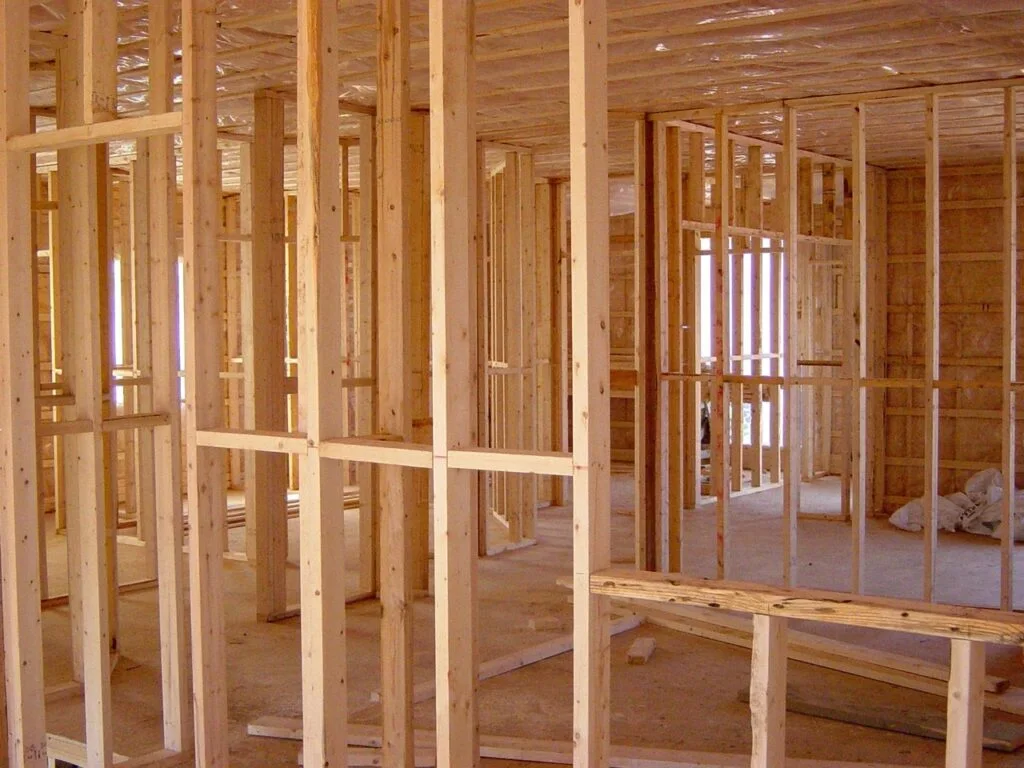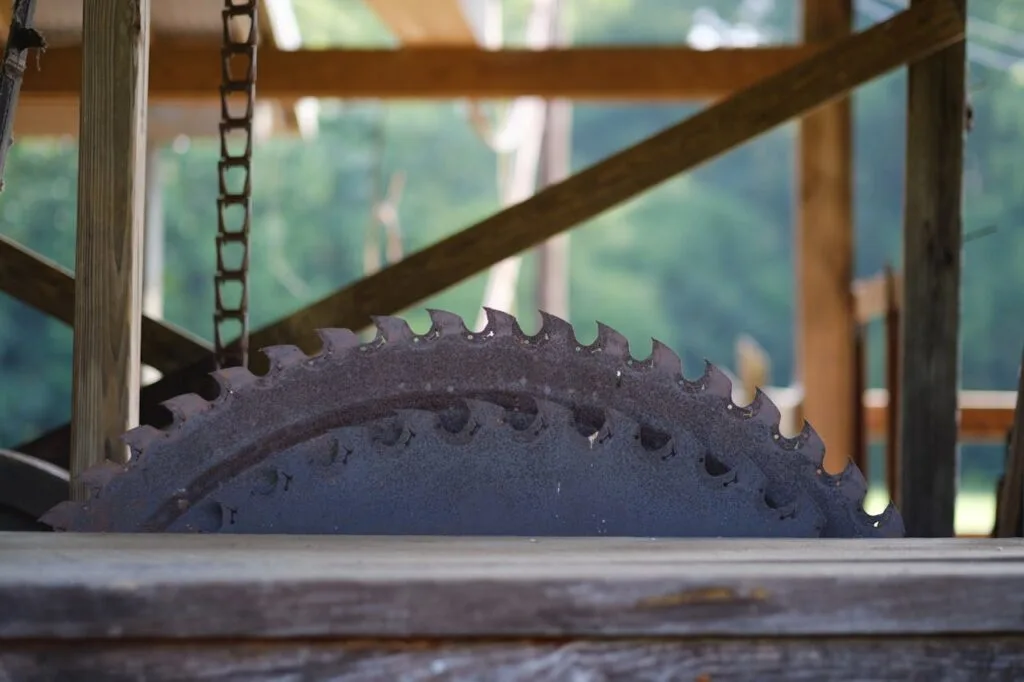This post may contain affiliate links. I only recommend products I use and love. Read the full disclosure here
Last Updated on March 17, 2025 by Alaina
Sustainable wood is becoming an essential component in modern construction projects, with increasing emphasis on eco-friendly materials. The uses of sustainable wood are expanding as its versatility and renewable nature make it a top choice for architects and builders seeking to minimize their carbon footprint.
As the demand for sustainable construction materials grows, wood’s role is evolving from traditional framing to cutting-edge uses that showcase its durability, beauty, and environmental benefits. Below are eight innovative ways sustainable wood is being used in building projects today.

Cross-Laminated Timber (CLT) for Multi-Story Buildings
Cross-laminated timber (CLT) has gained popularity as a viable alternative to concrete and steel in multi-story buildings. This engineered wood product is made by layering timber boards in alternating directions, which provides strength and stability similar to traditional building materials. CLT is not only lighter than concrete, making transportation and assembly more efficient, but it also absorbs carbon dioxide during its growth, offsetting emissions from the construction process.
Using CLT in high-rise buildings offers significant advantages. It reduces the need for steel and concrete, both of which are energy-intensive to produce. CLT can be prefabricated, which allows for faster construction times. The material is also fire-resistant, making it a safe choice for urban projects. As the demand for sustainable and efficient building materials rises, CLT is poised to revolutionize the construction industry.
Wooden Facades for Modern Architecture
Wooden facades are gaining traction as a sustainable and visually striking alternative to traditional building exteriors. Architects are increasingly turning to wood as a material for facades because of its ability to blend seamlessly with urban environments while offering a natural, warm appearance. The use of sustainable wood not only enhances the aesthetic value of a building but also provides insulation, contributing to energy efficiency.
Wooden facades can be treated with eco-friendly finishes to enhance their durability and resistance to the elements. Unlike conventional materials, which often require high levels of maintenance, sustainable wood finishes help preserve the integrity of the wood while promoting longevity.
Sustainable Wood Furniture for Commercial Projects
Furniture made from sustainable wood is becoming an increasingly popular choice for commercial projects, including offices, hotels, and restaurants. Wooden furniture offers durability and style, while the sustainable sourcing of the materials ensures minimal environmental impact. Many commercial properties are turning to wood products for their furnishings, as they add character and timeless appeal to spaces.
The growing demand for environmentally responsible materials in building projects is driving the adoption of sustainable wood in innovative ways. By using high-quality wood products, builders and architects are not only reducing the environmental impact of their projects but also enhancing the visual appeal and functionality of the spaces they create. Whether for structural components or interior design, the potential uses for sustainable wood are vast, and its role in modern construction will likely continue to expand in the years to come.
Wooden Beams and Trusses in Commercial Spaces
Wooden beams and trusses are being utilized in commercial spaces to create open, spacious interiors that align with modern design trends. These wooden elements not only provide structural support but also create a unique aesthetic that enhances the atmosphere of the space. Whether used in open ceilings or as part of the framework, wooden beams introduce natural textures that evoke warmth and sophistication.
Incorporating sustainable wood products like these into commercial spaces also helps reduce the overall environmental impact of construction. The renewable nature of wood makes it an ideal choice for architects who are committed to using materials that have a minimal environmental footprint. This use of wood is not limited to traditional buildings but is now a feature in modern office spaces, retail stores, and even restaurants.
Wooden Roofs with Natural Insulation Properties
Wooden roofs have become a popular choice for sustainable construction, especially in eco-friendly homes and buildings. Wood has natural insulating properties, which help regulate indoor temperatures and reduce the need for artificial heating and cooling. This characteristic makes wooden roofs not only energy-efficient but also cost-effective in the long term.
Wooden roofs can contribute to the overall aesthetic of a building. The warm, rustic charm of wood complements both modern and traditional architectural styles, making it a versatile choice for various types of structures. By opting for sustainable wood roofing, builders can create homes and buildings that are both beautiful and energy-efficient.

Wooden Interior Walls for Acoustic Benefits
Wooden interior walls are gaining recognition for their acoustic benefits, particularly in spaces where sound control is crucial, such as in concert halls, recording studios, or offices. The porous nature of wood helps absorb sound, improving the acoustics within a room. This makes it an ideal material for spaces that require soundproofing or noise reduction.
Incorporating sustainable wood into interior wall designs enhances both the functionality and aesthetic appeal of the space. Wood’s natural beauty brings a sense of warmth and tranquility to interior environments, making it an ideal choice for creating peaceful, productive atmospheres.
Green Roofing with Wood Elements
Green roofs, which feature vegetation growing on building tops, are becoming an increasingly popular way to reduce urban heat islands and improve air quality. Sustainable wood is often incorporated into the structure of green roofs to provide support for plant life while also adding an element of design.
These green roofs not only contribute to biodiversity but also provide natural insulation, reducing energy costs for the building below. The use of sustainable wood in these roofing systems helps support eco-friendly initiatives while maintaining the structural integrity of the building. As cities continue to adopt green initiatives, wood’s role in green roofs is expected to grow.
Sustainable wood is redefining modern construction by offering eco-friendly, durable, and visually appealing alternatives to traditional building materials. From structural elements like CLT and wooden beams to aesthetic features such as facades and acoustic walls, its versatility makes it a valuable asset in sustainable design. As the construction industry continues to prioritize environmental responsibility, the innovative use of wood will play a crucial role in shaping greener, more efficient buildings for the future.
